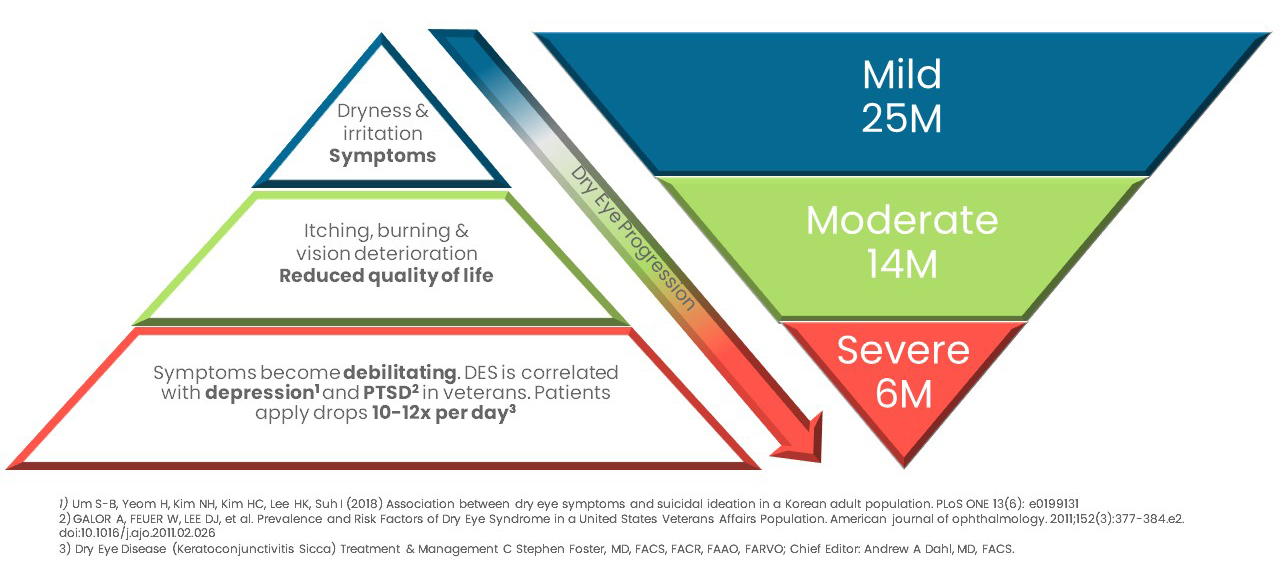Dry Eye
Dry Eye is disease that is characterized by the degradation of the tear film, leading to a cascade of inflammation, irritation, and pain. Without a healthy tear film, the eye has a compromised ability to protect itself from external hazards. Continued dryness can lead to ocular damage and vision loss.
Dry Eye Impacts Quality of Life

Dry Eye can be difficult to diagnose and treat; to alleviate the symptoms, we need to restore the lubricating properties of the tear film and allow the eye to heal itself. This is why artificial tears are so important. The tear film is made up of three layers with distinct purposes. The Mucous layer is secreted by the cells of the cornea, and its role is to smooth any rough patches on the surface of the eye. Next, the aqueous layer, which is produced by the lacrimal gland, serves to protect and flush the eye of any harmful debris. Between the aqueous layer and the external environment is the lipid layer, which is a barrier against evaporation. For an artificial tear to provide any relief to a patient, it must replicate each of these layers.
1(Yu, Junhua PhD; Asche, Carl V PhD; Fairchild, Carol J PhD ; The Economic Burden of Dry EyeDisease in the United States: ADecision Tree Analysis)
Office
700 Spring Forest Road, Suite 127
Raleigh, NC 27609
919.241.3200
